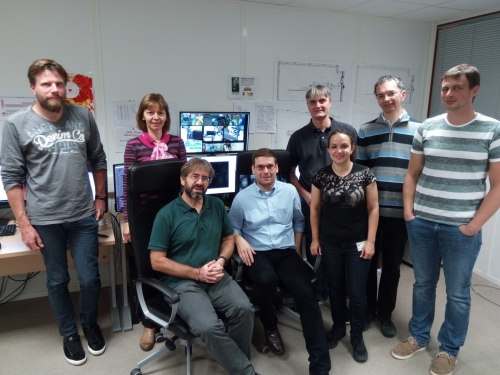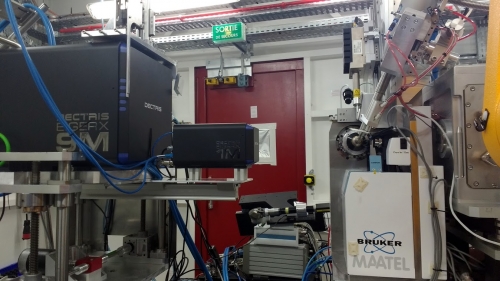In September 2017, a team from ELI Beams (Extreme Light Infrastructures, Prague, Czech Republic), together with participants from IBT-Biocev (Institute of Biotechnology, Vestec near Prague, Czech Republic) and University Paris-Sud (Orsay, France) performed protein crystallography experiments at a very rapid 3 kHz frame rate using the EIGER X 1M detector installed on the PROXIMA-2A beamline.
The measurements were performed using beamtime allocated for a standard proposal entitled “Comparative study of the structural differences in protein crystals by synchrotron and femtosecond laser plasma X-ray source”.
The motivation behind such fast measurements ( i.e. exposure times of only 330 microseconds) comes from the RP4 project at ELI Beams, led by Dr. Jakob Andreasson, for development of femtosecond applications in Atomic, Molecular and Biosciences. In particular, the diffraction station for femtosecond time resolved experiments will be built by Dr. Borislav Angelov, the station for femtosecond ellipsometry will be assembled by Dr. Shirly Espinosa, while the sample environment and protein crystallization will be furnished by Dr. Vitaly Polovinkin and Dr. Jan Dohnalek. At the end of 2016, ELI beams and IBT-Biocev received funding for the ELIBIO project led by Prof. Dr. Janos Hajdu focused on dynamic processes in biomolecules. The recent measurements performed at SOLEIL are key to enabling the experiments of the X-ray diffraction branch of this project.
The generation of the femtosecond X-ray pulses will be based on a laser driven plasma source (XPS) with a target made from a liquid metal alloy. The expected flux on the sample will be 106 photons per pulse with a 1 kHz repetition rate, which corresponds to a flux of 109 photons per second. On PROXIMA-2A, the scientists attenuated the beam by a factor of 1000 and collected 2D diffraction images, which were then processed using the program XDS.
The obtained results show that protein crystallography is possible at the 3 kHz frame rate of the Eiger X 1M detector, even when the flux from the XPS is as low as 108 photons per second. In the future, it is planned to compare single photon counting detectors, such as the Eiger, with integrating detectors (under development) to identify the limitations and the advantages of these different classes of detectors.

Photo 1:
From left to right: Damien Jeangerard (SOLEIL), Angelina Angelova (Université Paris-Sud), William Shepard (SOLEIL), Martin Savko (SOLEIL), Jan Dohnalek (IBT, Biocev), Shirly Espinosa (ELI Beams), Borislav Angelov (ELI Beams), Vitaly Polovinkin (ELI Beams).

Photo 2: The Eiger X 1M detector (ELI beams) installed in front of the Eiger X 9M (SOLEIL). Both detectors can transmit the measured data at 40 GB/sec to the processing computer. Due to the lower number of pixels, the frame rate can reach up to 3 kHz for the Eiger X 1M, as opposed to 238 Hz for the Eiger X 9M.
